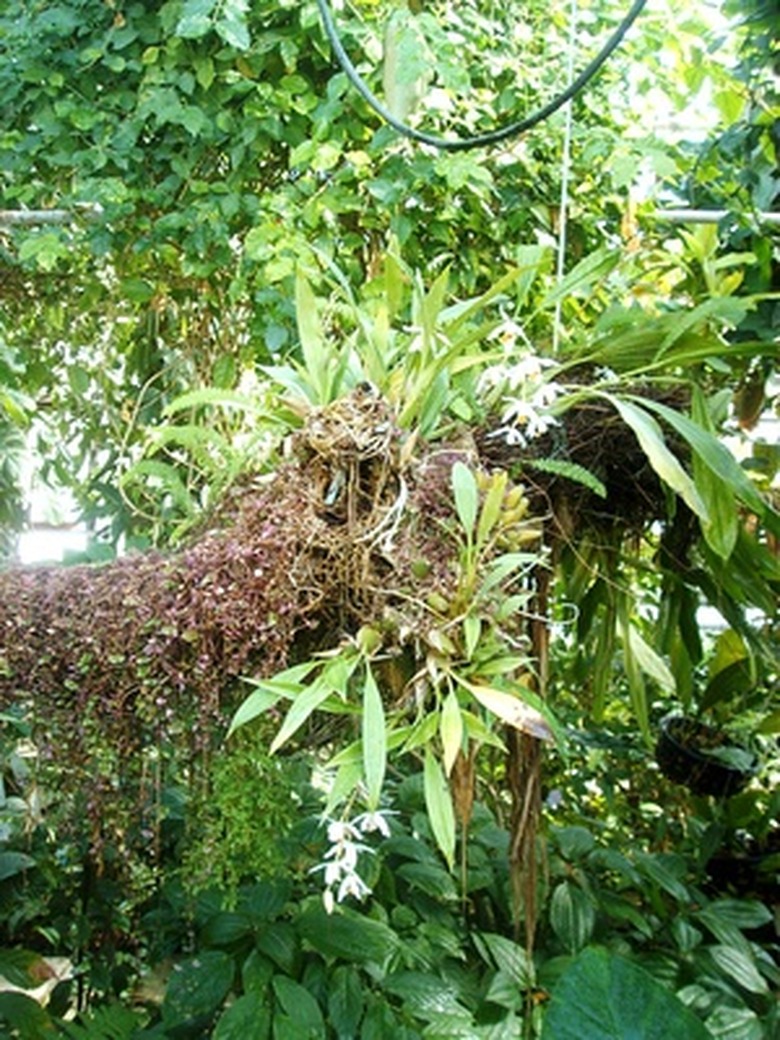The Natural Habitat Of Orchids
Orchids are often thought of as tropical perennial flowering plants. However, a number of varieties, like the Lady Slipper, are found in the northern latitudes of the United States. Orchids in colder climates tend to be terrestrial orchids, however. Epiphytic, or orchids that grow on tree surfaces, tend to be primarily tropical and subtropical plants.
Types
There are two general types of orchids. One is terrestrial orchids. Terrestrial orchids grow in the organically rich soils of the forest floor. They thrive in the decomposing leaves and twigs of the forest canopy. The second general type of orchids is epiphytic. Epiphytic orchids grow by attaching themselves to the bark of living trees, dying trees or, in rare cases, dead trees.
- Orchids are often thought of as tropical perennial flowering plants.
- Epiphytic, or orchids that grow on tree surfaces, tend to be primarily tropical and subtropical plants.
Air Flow
In their natural environments, orchids have good air flow around the roots, leaves and flowers. Terrestrial orchids grow in loose soils with very high organic content that often includes leaves and twigs. This allows air to reach their roots. The roots of epiphytic orchids attach the plants to tree bark. This allows large root surface areas to be exposed to air. By growing high in the air, there is little to no interference with air flow to the roots and around the plant.
Nutrients
Terrestrial orchids get their nutrients in a way similar to that of any other plant. The roots work with beneficial soil organisms to break down organic matter into usable nutrients. Epiphytic orchids have specialized roots with multiple layers that help the roots take the nutrients they need from organic matter that falls on the roots, the bark below the roots and the air.
- In their natural environments, orchids have good air flow around the roots, leaves and flowers.
Water
Like with nutrient absorption, terrestrial orchids get their water in the same way as other plants: through rainfall, dew and other naturally occurring water sources. Epiphytic orchids, however, don't have the advantage of having soil to hold in moisture. Epiphytic orchids have special root layers that absorb and store water for future use. This water can be in the form of rain, water running down a branch or, in some cases, humidity in the air.
Sun
Because they grow under taller forest canopies or on the branches of trees, orchids can grow in lighting conditions ranging from partial sun to full shade, depending on the species. In nature, an orchid won't grow in a place where lighting conditions are unsuitable. Epiphytic orchids, because they often have less protection from the sun, often are more tolerant of bright, hot light.
- Like with nutrient absorption, terrestrial orchids get their water in the same way as other plants: through rainfall, dew and other naturally occurring water sources.
- Epiphytic orchids, because they often have less protection from the sun, often are more tolerant of bright, hot light.
